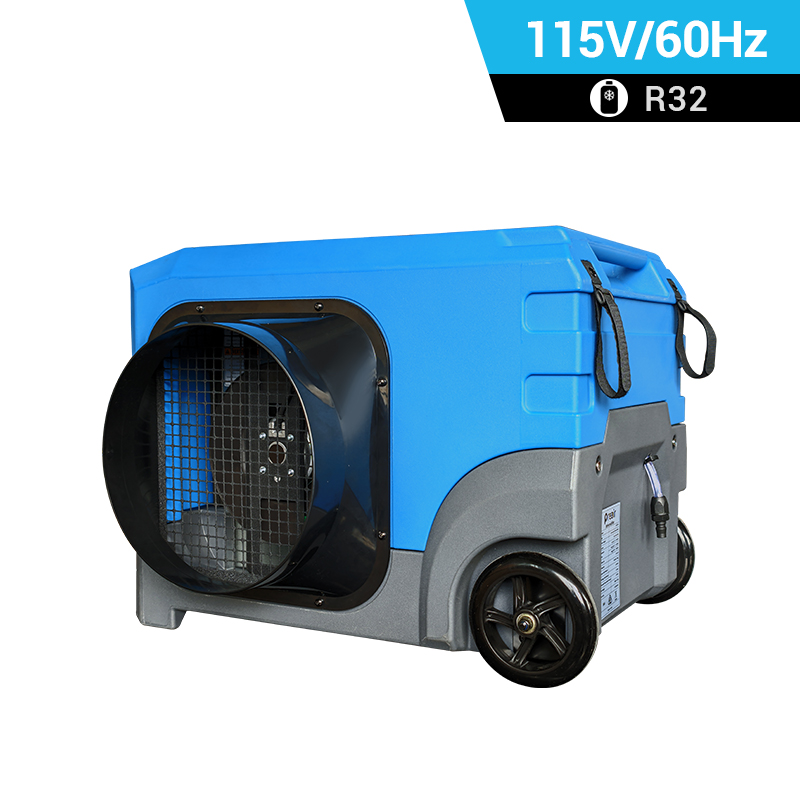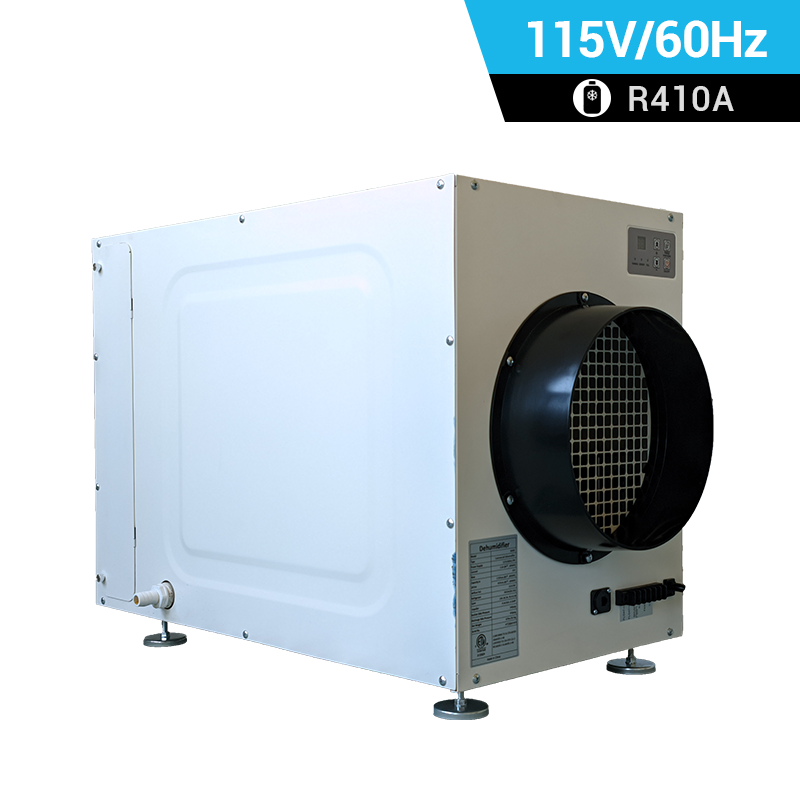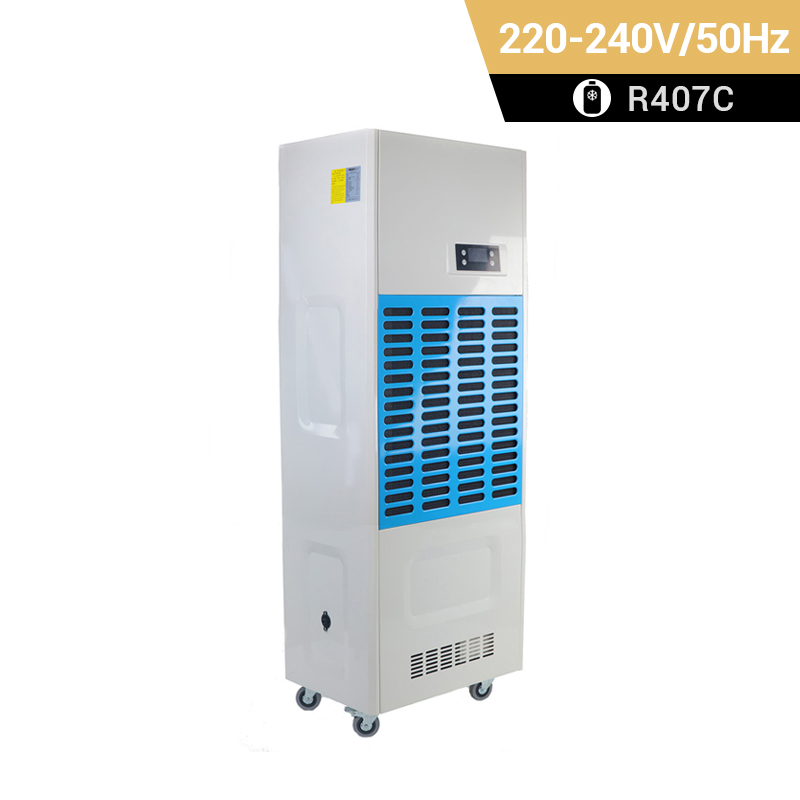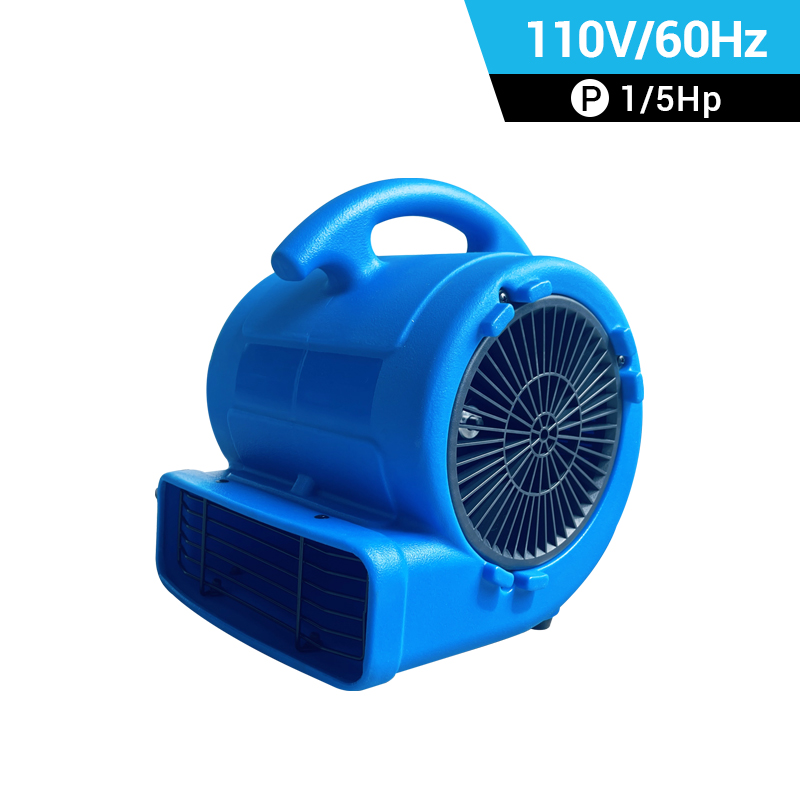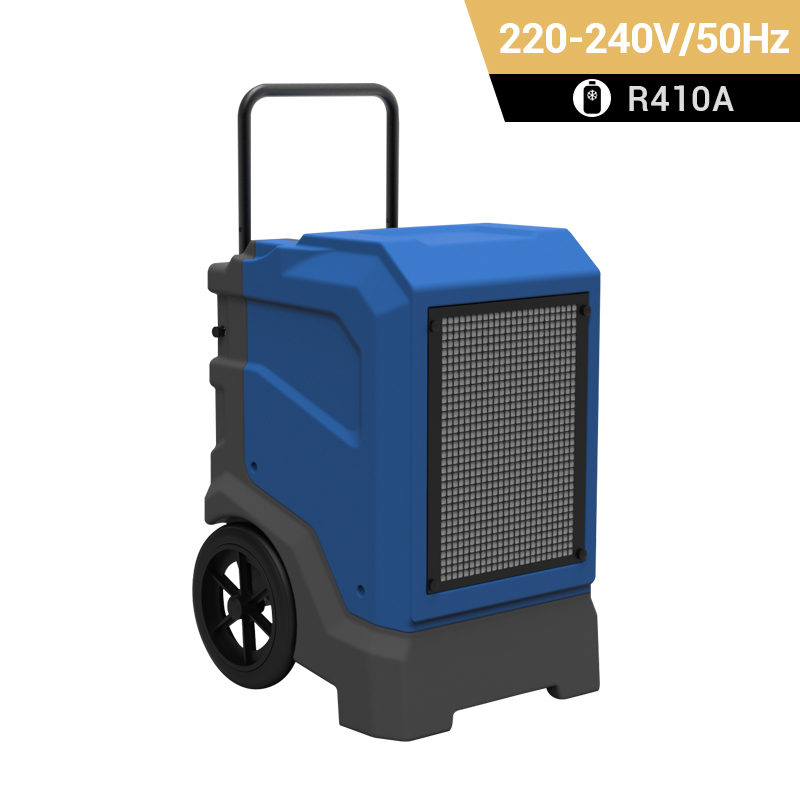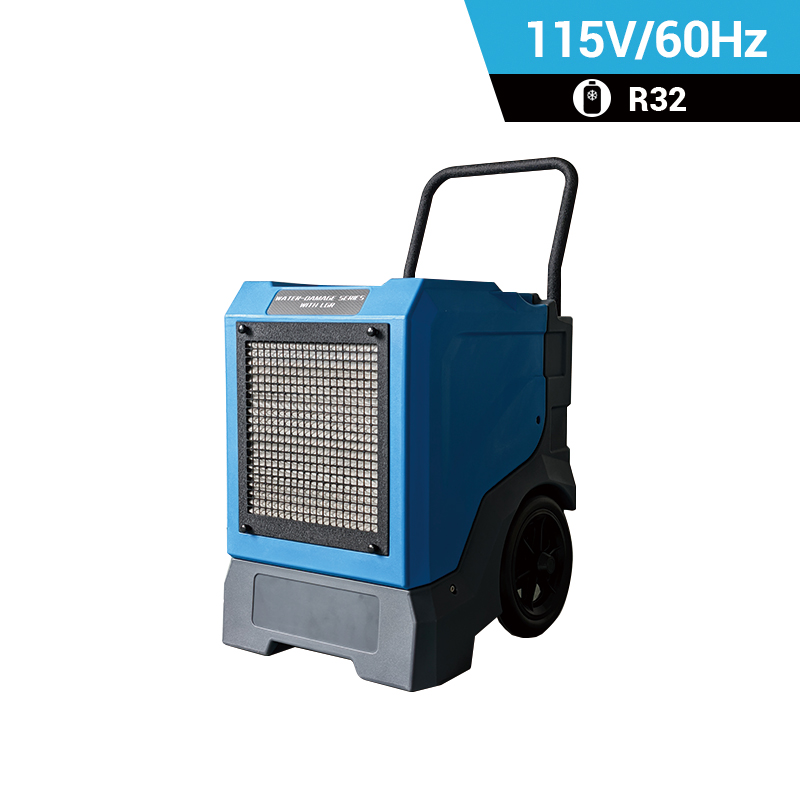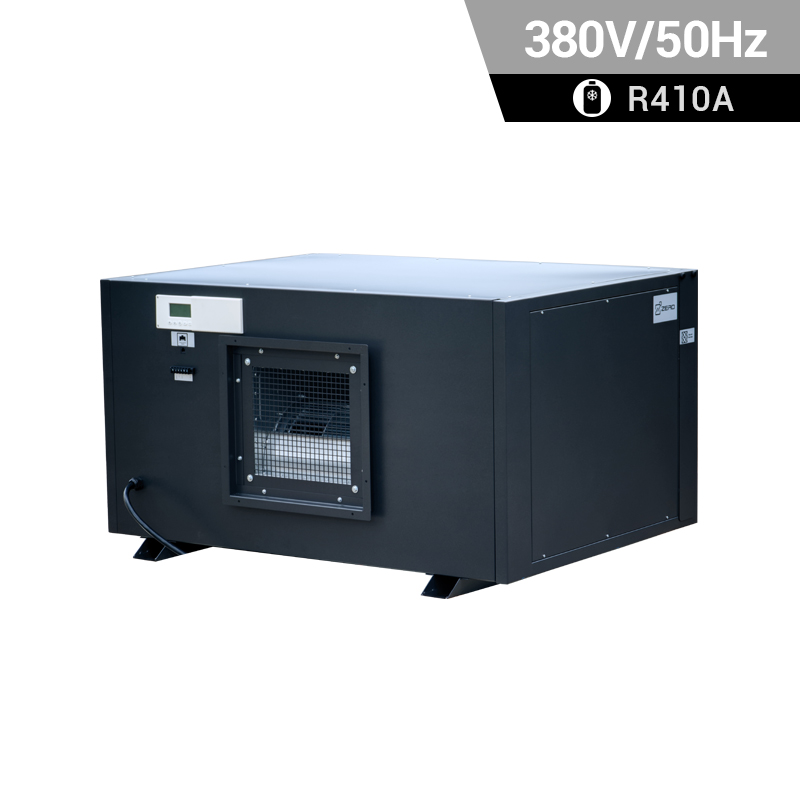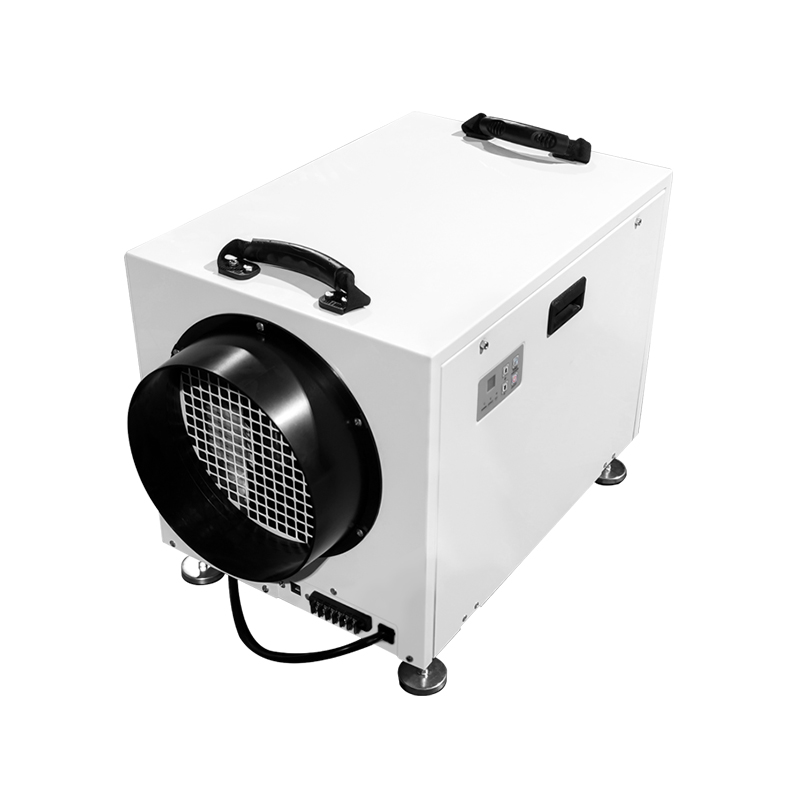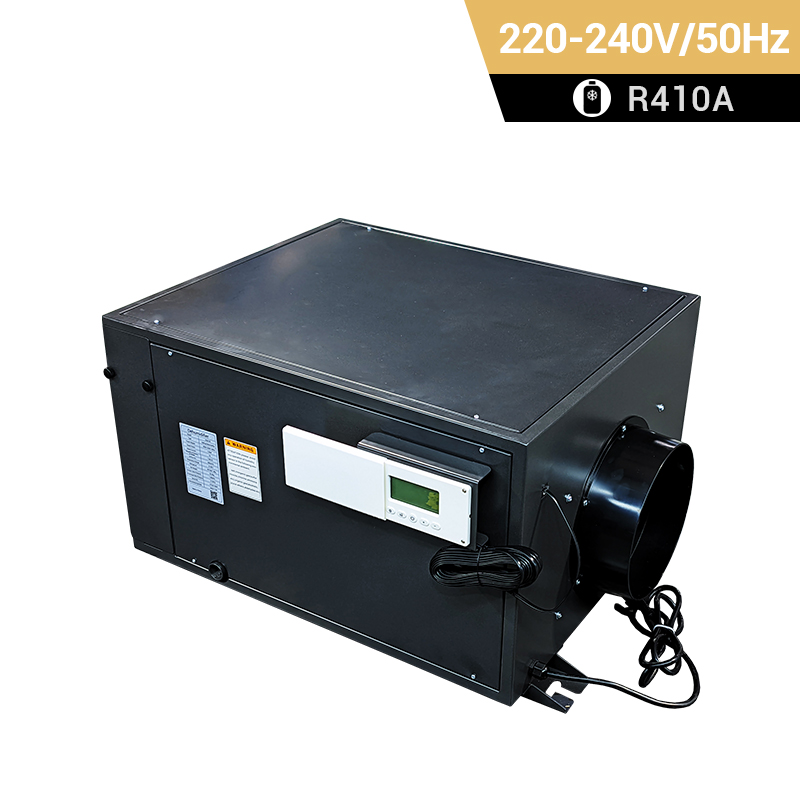Ducted Dehumidifier
A ducted dehumidifier, also known as a whole-house or central dehumidifier, is a system designed to regulate the humidity level in an entire building or a specific area through the existing heating, ventilation, and air conditioning (HVAC) system. Here's how it works:
1. Air Circulation: The system is connected to the HVAC ductwork, allowing it to circulate air throughout the building.
2. Air Intake: The ducted dehumidifier for basement draws in moist air from various parts of the building through a return duct. This air typically contains a significant amount of moisture.
3. Cooling Coils: Inside the commercial ducted dehumidifier, there are cooling coils. The warm, moist air passes over these coils. As the air cools, the moisture condenses into water droplets.
4. Water Collection: The condensed water droplets are collected in a drip pan or a collection tray. This water is typically directed to a drain for disposal.
5. Air Reheating (Optional): In some models, the now drier air might pass over a reheating element before being returned to the HVAC system. This helps to ensure that the air supplied back into the building is at a comfortable temperature.
6. Dry Air Distribution: The now drier air is mixed back with the existing air supply in the HVAC system. This helps maintain a consistent humidity level throughout the building.
7. Humidity Control: The dehumidifier usually has a humidistat or a sensor that monitors the humidity level. When the humidity level rises above a set threshold, the dehumidifier activates to remove moisture from the air.
8. Cycling On and Off: The dehumidifier cycles on and off based on the humidity levels it detects. This ensures that the humidity is maintained within the desired range. If you want to buy the best ducted whole house dehumidifier, Contact Preair at once.
9. Air Filtration (Optional): Some ducted dehumidifiers also come with air filters that help remove dust, pollen, and other particles from the air before it is recirculated.
Overall, a ducted dehumidifier can be a more efficient way to control humidity in larger spaces or entire buildings compared to standalone units, especially when integrated with an existing HVAC system. It helps to maintain a comfortable and healthy indoor environment by preventing issues like mold growth, musty odors, and damage to furniture or electronics caused by excess moisture.
Related Products

Top Selling Products
-

Phone
-

E-mail
-

Facebook
-

Youtube
-

Top


